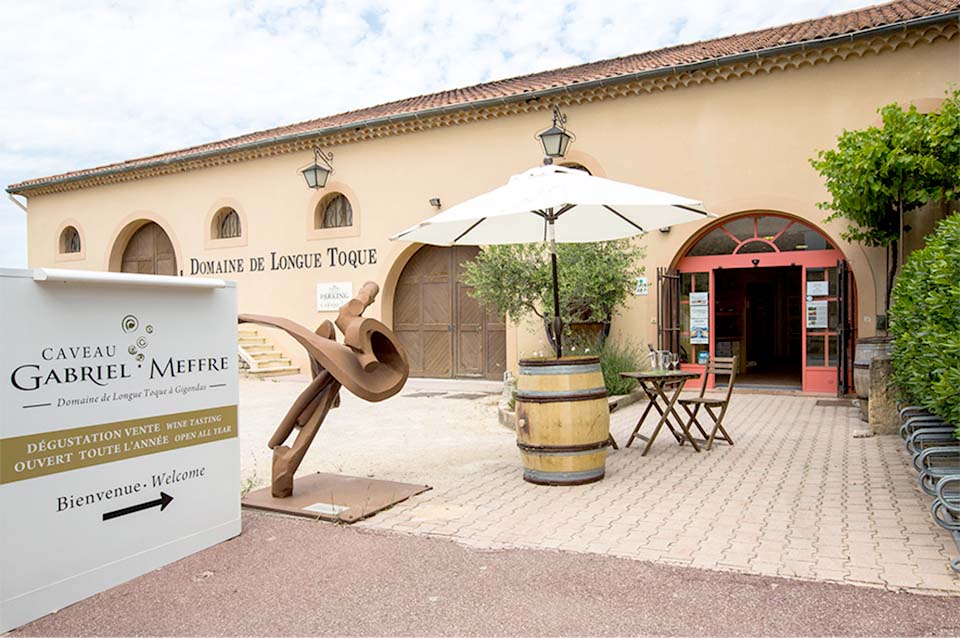
The River Rhône is one of the great waterways of Europe, rising high in the Swiss Alps and stretching over five hundred miles to the Mediterranean Sea. It’s one of Europe’s longest rivers and has been a lifeline since Greek and Roman times. It was the main trade route from the Mediterranean to the heart of ancient Gaul. But navigation was not always easy on this most temperamental of rivers. In the spring, navigators had to deal with floods and fierce currents whereas the late summer the main problem was drought.
The first cultivated vines in the region were planted around 600 BC. Centuries later, Rhône wines were immensely popular with the kings and the papal community in Avignon and during the seventeenth century, regulations were issued to govern the quality of the wine. As the reputation of Rhône wine grew, a royal edict of1737 required each cask to be branded with the letters CDR (Côtes du Rhône) to guard against forgeries. This was the precursor of the nationwide AOC (Appellation d’Origine Contrôlée) system that exists throughout France today.
Côtes du Rhône is an entry-level appellation that includes red, rosé and white wines though most of them are red. It covers wine produced in an area that stretches about 120 miles from the south part of Lyon down to Avignon. While the appellation doesn’t have the prestige of the Rhône’s more famous names such as Châteauneuf-du-Pape or Hermitage, the Côtes du Rhône has become known for good everyday wines at affordable prices. Better quality wines are labelled Côtes du Rhône Villages and they are more complex wines from villages where vineyard yields are lower and alcohol slightly higher. The more distinguished ones also show the name of the village. The top wines from the region are labeled Côtes du Rhône Cru and the name of the vineyard is also shown on the label.
The Rhône Valley is divided into the North and South which are quite separate regions about an hour’s drive apart. The style of the wines is different too, caused by varying climatic conditions, the position of the vineyards in relation to the river, the nature of the soil and the grape varieties planted. In the Northern Rhone, Syrah (known as Shiraz in some other parts of the world) is the only red grape variety permitted. In the Southern Rhône, Syrah plays an important role but so do several other varietals, especially Grenache and Mourvèdre. Grenache is one of the most widely planted red wine grape varieties in the world. It’s the leading red grape of the Southern Rhône and is used in almost all local wine blends. This grape variety is well-suited to the warm Mediterranean climate and gives the wine rich, fruit flavours with subtle notes of spicy white pepper.
Gabriel Meffre Côtes du Rhône St Vincent 2019 (red) Bt750 @ Wine Connection
Gabriel Meffre is one of the largest wine producers of the region. Some of the company’s wines are named after patron saints or historical leaders. Saint Vincent was a deacon and a martyr of the Church of Saragossa in Spain and lived during the fourth century. He’s now regarded as the patron saint of winemakers, partly because of the French word vin in his name. If you are vegan or vegetarian, you’ll be pleased to know that this wine is vegan friendly, because no dairy or animal biproducts were used in its production.
 This wine is the usual Southern blend of Grenache and Syrah which were vinified separately in stainless steel tanks to preserve their individual characteristics. The blended wine was then aged for six months before bottling. It’s a rich crimson colour and those characteristic “legs” appear when you swirl the wine around in the glass. There’s a rich aroma of sweet black fruit, peppery herbs, thyme, rosemary and a dash of mint. There are also mineral and mulberry aromas in the background. It’s a promising start. At a relatively high 14% ABV, the wine has a satisfying mouth-filling dryness yet a delightfully soft texture with an almost silky mouth-feel with gentle soft and grainy tannins. The texture is balanced by a touch of pleasing acidity and a hint of peppery spiciness. The dry finish lingers on for ages – invariably a sign of a well-crafted wine.
This wine is the usual Southern blend of Grenache and Syrah which were vinified separately in stainless steel tanks to preserve their individual characteristics. The blended wine was then aged for six months before bottling. It’s a rich crimson colour and those characteristic “legs” appear when you swirl the wine around in the glass. There’s a rich aroma of sweet black fruit, peppery herbs, thyme, rosemary and a dash of mint. There are also mineral and mulberry aromas in the background. It’s a promising start. At a relatively high 14% ABV, the wine has a satisfying mouth-filling dryness yet a delightfully soft texture with an almost silky mouth-feel with gentle soft and grainy tannins. The texture is balanced by a touch of pleasing acidity and a hint of peppery spiciness. The dry finish lingers on for ages – invariably a sign of a well-crafted wine.
Although this medium-bodied wine could go it alone, I think it would be better appreciated with food. It would work well with most red meat or even richly cooked chicken especially with mushrooms. Snack food like sausages and burgers also spring to mind. However, the serving temperature is really important so don’t drink this wine too cold, as is all too common in these parts. It will spoil the wine. Rhône reds are usually at their best about 15-16°C (59-61°F) so the glass will feel slightly cool to the touch, but definitely not chilled.
Wines that carry the basic Côtes du Rhône appellation (both red and white) are invariably dry, easy drinkers and food-friendly. One writer suggested recently that if you are presented with a daunting wine list at a restaurant and you have absolutely no idea what to order, simply ask for a Côtes du Rhône.
 |
 |
 |




